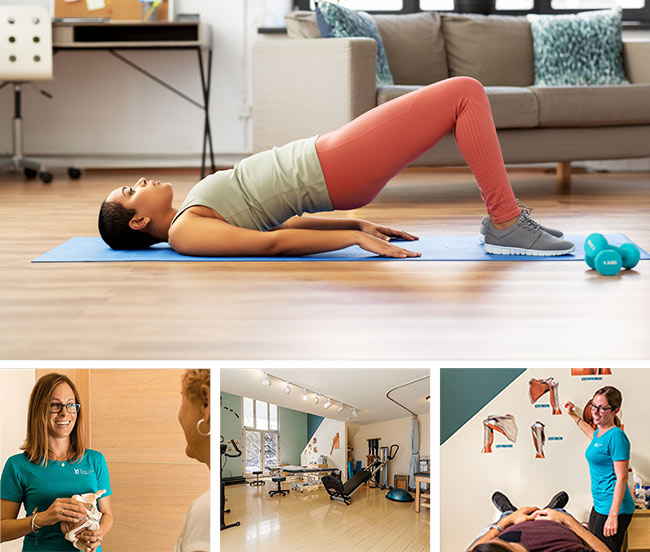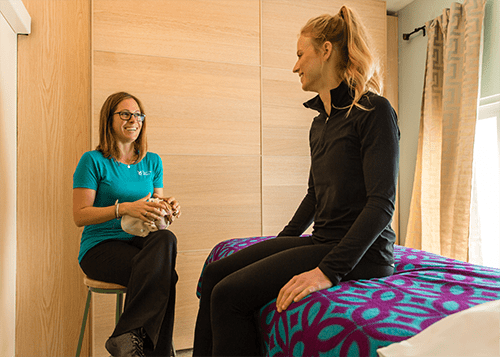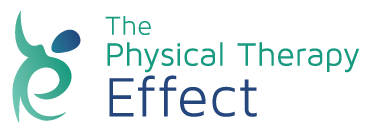Overcome your challenges
Pelvic Floor Online Treatment Course
Course Includes:
+ Over 1 hour of educational content relevant to treating pelvic floor issues
+ 28 exercise videos that you can follow along with at home to treat your pelvic floor
+ Online communication with a pelvic health physical therapist
Benefits:
+ Take the course from the comfort of your own home
+ Ask questions to a pelvic health physical therapist via email
+ Access to bonus educational resources & references
Only $25 for complete access!


Online Treatment Course
Pelvic Floor Treatment
Our online treatment course is designed to help you remove discomfort from pelvic floor pain. We offer a comprehensive, evidence-based program that addresses the root causes of pelvic floor dysfunction and provides you with the tools and knowledge you need to improve your symptoms.
Only $25 for complete access!
These videos are for information only. This content does not replace regular medical care with your licensed medical doctor. Please consult your local medical doctor first if you have any questions or concerns.
Are You Experiencing These Signs?
Pelvic Floor Symptoms & Pains
- Urinary Incontinence
- Stress Incontinence
- Urge Incontinence
- Urinary Dysfunctions
- Pelvic/Vaginal pain
- Fecal Incontinence
- Chronic Constipation
- Coccydynia
- Pain with Sexual Activity
- Nerve Pain
- Pre/Post Operative
- Bladder Pain
Urinary Incontinence
Incontinence is defined at any unintentional loss of urine
Stress Incontinence
Stress incontinence occurs when any physical activity (ie: coughing, sneezing, laughing, jumping, running or heavy lifting) puts pressure on your bladder causing leakage.
Urge Incontinence
Urge incontinence is associated with the bladder muscle contracting, usually associated with an increased urge to urinate, causing a leakage of urine.
Urinary Dysfunctions
Voiding dysfunction describes conditions where there is poor coordination between the bladder muscle and the urethra. This can result in incomplete relaxation or over activity of the pelvic floor muscles during voiding. Voiding dysfunction can manifest as a wide range of symptoms which can include difficulty in emptying bladder, urinary hesitancy, slow or weak urine stream, urinary urgency, urinary frequency or dribbling of urine. These conditions can be due to nerve dysfunction, non-relaxing pelvic floor muscles or both. Voiding dysfunction is also classified as being caused by either underactivity of the bladder (detrusor) or outflow (urethra).
Pelvic/Vaginal pain
This can refer to any pain within the pelvis or vagina. Common diagnoses can be vulvodynia, vaginismus or vestibulodynia. For men this can include scrotal or testicular pain.
Fecal Incontinence
Much like urinary incontinence, fecal incontinence can be a very embarrassing condition that is described as the inability to control bowel movements, causing stool to leak unexpectedly from the rectum. Also called bowel incontinence, fecal incontinence ranges from an occasional leakage of stool while passing gas to a complete loss of bowel control. Damage to the nerves that control the sphincter muscles in your rectum is the most common cause of fecal incontinence. This can happen during a surgical procedure, childbirth, or most commonly due to constant straining due to constipation.
Chronic Constipation
Long-term constipation can lead to many other pelvic floor disorders and can be a big cause of pelvic and abdominal pain. PT can use biofeedback and muscle retraining to help improve bowl habits along with diet modifications to aid in reducing constipation.
Coccydynia
Pain associated with the coccyx or tailbone. This pain is usually due to some form of trauma such as falling and landing on your bottom.
Pain with Sexual Activity
Also known as a condition called dyspareunia. This can included any pain that occurs before, during or immediately following intercourse. Males may experience painful ejaculation or erection.
Nerve Pain
Pelvic nerve conditions can be associated with the following nerves: pudendal nerve, ilio-hypogastric nerve, ilio-inguinal nerve, or the genito-femoral nerve. These nerves are located either in the abdominal wall, the pelvic cavity or surrounding the groin and perineal area. Damage to any of these nerves can cause chronic pelvic pain.
Pre/Post Operative
This can refer to any pelvic, hip or low back surgery. Whether you have had a hysterectomy, bladder suspension surgery, prostatectomy, spinal fusion or hip surgery its possible for your pelvic floor muscles to respond in a way that can cause pain. PT can help with any pain issues that can arise from muscle imbalance, instability, scar tissue formation or a combination of the above!
Bladder Pain
Can be referred to a condition called Interstitial Cystitis or Painful Bladder Syndrome. These conditions result in reoccurring pain and discomfort in the bladder and surrounding areas. Symptoms can vary in severity and patients may experience worsening pain as the bladder fills and empties.
Post-partum Pain
Following childbirth it is very common to have some sort of low back or pelvic pain. PT can be very helpful to decrease the pain faster and return you to your prior level of functioning!
Urinary Incontinence
Incontinence is defined at any unintentional loss of urine
Stress Incontinence
Stress incontinence occurs when any physical activity (ie: coughing, sneezing, laughing, jumping, running or heavy lifting) puts pressure on your bladder causing leakage.
Urge Incontinence
Urge incontinence is associated with the bladder muscle contracting, usually associated with an increased urge to urinate, causing a leakage of urine.
Urinary Dysfunctions
Voiding dysfunction describes conditions where there is poor coordination between the bladder muscle and the urethra. This can result in incomplete relaxation or over activity of the pelvic floor muscles during voiding. Voiding dysfunction can manifest as a wide range of symptoms which can include difficulty in emptying bladder, urinary hesitancy, slow or weak urine stream, urinary urgency, urinary frequency or dribbling of urine. These conditions can be due to nerve dysfunction, non-relaxing pelvic floor muscles or both. Voiding dysfunction is also classified as being caused by either underactivity of the bladder (detrusor) or outflow (urethra).
Pelvic/Vaginal pain
This can refer to any pain within the pelvis or vagina. Common diagnoses can be vulvodynia, vaginismus or vestibulodynia. For men this can include scrotal or testicular pain.
Fecal Incontinence
Much like urinary incontinence, fecal incontinence can be a very embarrassing condition that is described as the inability to control bowel movements, causing stool to leak unexpectedly from the rectum. Also called bowel incontinence, fecal incontinence ranges from an occasional leakage of stool while passing gas to a complete loss of bowel control. Damage to the nerves that control the sphincter muscles in your rectum is the most common cause of fecal incontinence. This can happen during a surgical procedure, childbirth, or most commonly due to constant straining due to constipation.
Chronic Constipation
Long-term constipation can lead to many other pelvic floor disorders and can be a big cause of pelvic and abdominal pain. PT can use biofeedback and muscle retraining to help improve bowl habits along with diet modifications to aid in reducing constipation.
Coccydynia
Pain associated with the coccyx or tailbone. This pain is usually due to some form of trauma such as falling and landing on your bottom.
Pain with Sexual Activity
Also known as a condition called dyspareunia. This can included any pain that occurs before, during or immediately following intercourse. Males may experience painful ejaculation or erection.
Nerve Pain
Pelvic nerve conditions can be associated with the following nerves: pudendal nerve, ilio-hypogastric nerve, ilio-inguinal nerve, or the genito-femoral nerve. These nerves are located either in the abdominal wall, the pelvic cavity or surrounding the groin and perineal area. Damage to any of these nerves can cause chronic pelvic pain.
Pre/Post Operative
This can refer to any pelvic, hip or low back surgery. Whether you have had a hysterectomy, bladder suspension surgery, prostatectomy, spinal fusion or hip surgery its possible for your pelvic floor muscles to respond in a way that can cause pain. PT can help with any pain issues that can arise from muscle imbalance, instability, scar tissue formation or a combination of the above!
Bladder Pain
Can be referred to a condition called Interstitial Cystitis or Painful Bladder Syndrome. These conditions result in reoccurring pain and discomfort in the bladder and surrounding areas. Symptoms can vary in severity and patients may experience worsening pain as the bladder fills and empties.
Post-partum Pain
Following childbirth it is very common to have some sort of low back or pelvic pain. PT can be very helpful to decrease the pain faster and return you to your prior level of functioning!
The best of the best
Meet Our Specialists

Dr. Allison McKay
Doctor of Physical Therapy (DPT), Pelvic Rehab Practitioner Certification (PRPC)
Allison has been working as a physical therapist since 2009. Initially working outside of Boston she moved to San Diego after two years of working as a traveling Physical Therapist. Once she settled in San Diego Allison returned to working in an outpatient setting at The Physical Therapy Effect in 2014.
Allison studied Physical Therapy at Northeastern University in Boston Massachusetts where she graduated with a Doctorate of Physical Therapy in 2009. In the time since graduation, Allison has pursued new learning opportunities for orthopedic manual Physical Therapy as well as advanced training classes in Women’s Health and Pelvic Floor Rehabilitation. She has her Pelvic Rehabilitation Practitioner Certification through the Herman & Wallace Pelvic Rehabilitation Institute, which she puts to use as the lead Physical Therapist for The Physical Therapy Effect’s Pelvic Health Rehabilitation Program.

Dr. Hannah Willms
Doctor of Physical Therapy (DPT)
Dr. Hannah Willms, DPT, joined The PT Effect team in 2021 after relocating from Arizona. Hannah received her doctorate from A.T. Still University in Mesa, Arizona in 2019. Prior to coming out west, Hannah grew up in Iowa, where she attended Iowa State University. Hannah has participated her whole life in a variety of athletics and competed at the collegiate level in both volleyball and track/field.
Hannah enjoys treating a variety of orthopedic conditions and has a strong passion for women’s health and pre/postnatal fitness/rehab. Hannah has completed postgraduate pelvic floor training through Herman-Wallace, and received her certification in pre/postnatal fitness coaching through Girls Gone Strong. She utilizes a variety of manual therapy techniques and is trained in the Graston Technique. She enjoys athletes of all ages and has experience progressing them in their return to sport/activity.











